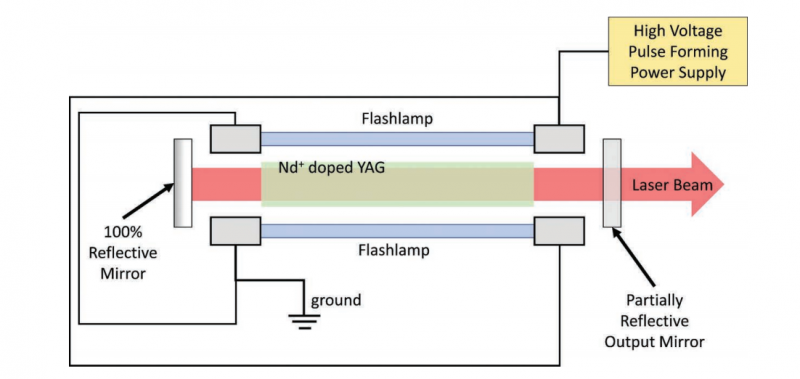What is a Nd:YAG Laser?
Yttrium aluminum garnet or YAG is a crystal that is doped with ionized neodymium. It is the neodymium ions that provide the stimulated emission transitions for laser action. This laser is often referred to as a Nd:YAG, and oftentimes just “YAG,” or more concisely it is Nd+:Y3Al5O12. Figure below shows a diagram of a Nd:YAG laser. The function is much the same as the ruby laser only the medium has different transition energies. The Nd:YAG typically is implemented in a cavity that selects the 1,064-nm wavelength transition, which is in the infrared and cannot be seen by the human eye. There are other transitions sometimes used at 946, 1,120, 1,320, and 1,440 nm Nd:YAG lasers can be flashlamp, diode, or laser pumped and can be continuous or pulsed. In the pulsed mode, they are typically operated by pumping the laser until an extreme population inversion is reached and then suddenly the output pathway for transmission of light is opened allowing the majority of cavity-stored energy to be dumped out at once. This process is known as Q-switching and is usually accomplished with some sort of nonlinear optical switching component.

In this laser, the YAG is the “host material” for the Nd+ “dopant” material.
There are other host materials that will work as well for neodymium such as yttrium orthovanadate or YVO4 as discussed in Chapter 4, yttrium lithium fluoride, or YLF (pronounced “yelf”), and even glass. All of these lase in the infrared. We are most likely familiar with these lasers as we have seen very bright green beams at laser light shows, or bright green laser pointers. But these are infrared lasers so how are they emitting green beams of light?
